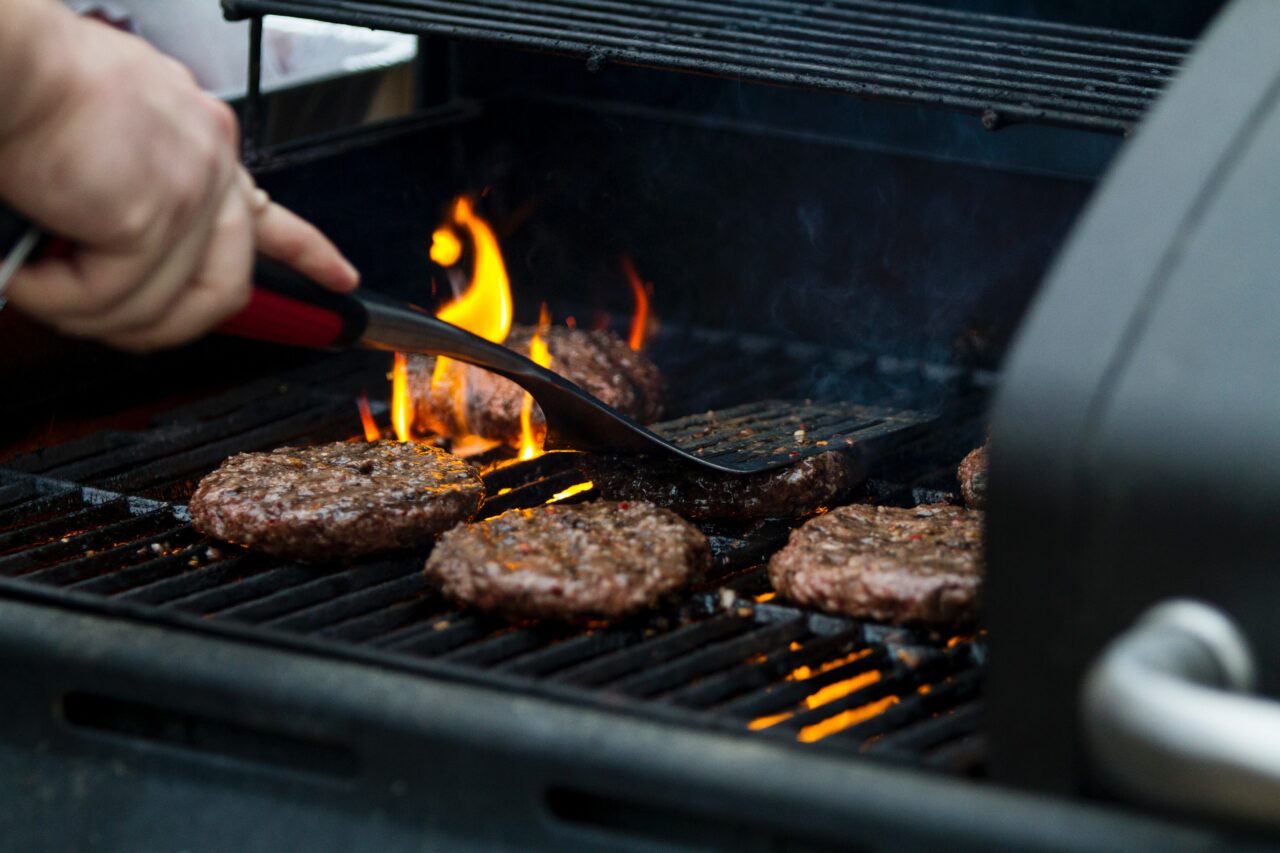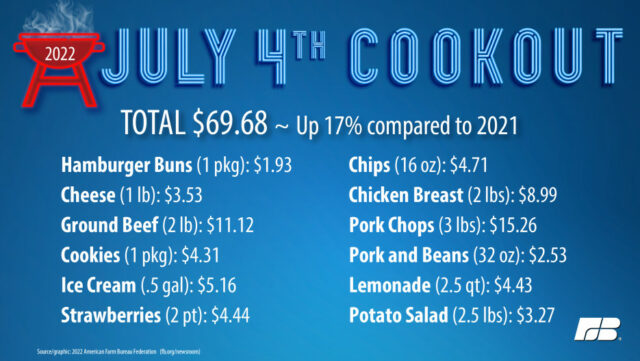
As you celebrate the “land of the free,” be prepared to pay.
The cost for a good-ole’ Fourth of July cookout is up 17% — or about $10 — from last year, according to a new American Farm Bureau Federation marketbasket survey.
So, how much can you expect to pay to party in the USA?
The survey found that U.S. consumers pay $69.68 for their favorite Independence Day cookout foods, including cheeseburgers, pork chops, chicken breasts, homemade potato salad, strawberries and ice cream. That’s the average cost of a summer cookout for 10 people, which breaks down to less than $7 per person.
The higher costs are a result of ongoing supply chain disruptions, inflation and the war in Ukraine, according to the report. Farmers are feeling the price-point pain too, according to AFBF Chief Economist Roger Cryan.
“Despite higher food prices, the supply chain disruptions and inflation have made farm supplies more expensive; like consumers, farmers are price-takers not price-makers,” Cryan said in a statement. “Bottom line, in many cases the higher prices farmers are being paid aren’t covering the increase in their farm expenses. The cost of fuel is up and fertilizer prices have tripled.”
Cryan also pointed to the cascading effects of the war in Ukraine, as that country’s contributions to global food security are cut off, Russian and Belarusian fertilizer exports are constrained, and some other countries pull back exports to protect their domestic supplies.

The largest year-to-year price increase was for ground beef, the report showed.
The retail price for two pounds of ground beef sits at $11.12, up 36% from last year. Meanwhile, the Agriculture Department’s Producer Price Index indicates that compared to a year ago, farm-level cattle prices are up 17.5%, but wholesale beef prices are down 14% — highlighting the differences between farm-level, wholesale and retail beef prices and how the events of the last few years have had significant impacts on the beef production and cattle pricing cycles, making them all hard to predict.
Several other foods in the survey, including chicken breasts, pork chops, homemade potato salad, fresh-squeezed lemonade, pork & beans, hamburger buns and cookies, also increased in price.
One bright spot for consumers is the average retail price for strawberries, which declined by 86 cents compared to a year ago. Sliced cheese and potato chips also dropped in price, 48 cents and 22 cents, respectively. Better weather conditions in some fruit-growing regions and greater retailer pricing flexibility for processed products are the likely drivers behind the modest price declines for these items.
“According to the Agriculture Department’s revised Food Dollar Series, farmers currently receive approximately 8% of every food marketing dollar,” Cryan said in a statement. “The farmers’ share of the retail food dollar is as low as 2% to 4% for highly processed foods such as bread and cereal, and can be 35% or more for some fresh products.”
The year-to-year direction of the marketbasket survey tracks with the federal government’s Consumer Price Index report for food at home and general inflation across the economy. Both the index and the marketbasket show increases of more than 10% compared to year-ago levels.
“The increased cost of food and supplies is a very real concern in our country and across the globe,” AFBF President Zippy Duvall said in a statement. “U.S. food assistance programs and food banks help those who struggle to make ends meet here at home, but the story is much different around the globe as food insecurity skyrockets. The big impact of a single event in Ukraine shows how dependent the world is on stable, productive agriculture.”
Data for this year’s survey was collected by 176 volunteer shoppers across the country and in Puerto Rico, including Farm Bureau members.




2 comments
Andrew Finn
July 2, 2022 at 9:26 pm
Ah, the 4th of July !!!! BOOM !!!! another round of the inevitable mattress sales and horrendous noise. Wonder how many people this year will be known as “Fingers” or “Lefty” after blowing up their hand with fireworks. Of course we will then be expected to feel sorry for them. People will spend a bazillion dollars on fireworks and complain all month long that they have no money. —— We will be at home comforting our dog who will be terrorized once again by the ridiculous noise. —— Can’t wait for the 5th of July !!!!!!
YYep
July 3, 2022 at 3:45 pm
Prices been high since they advertised salmon from 3 or less a pound to 10
Comments are closed.